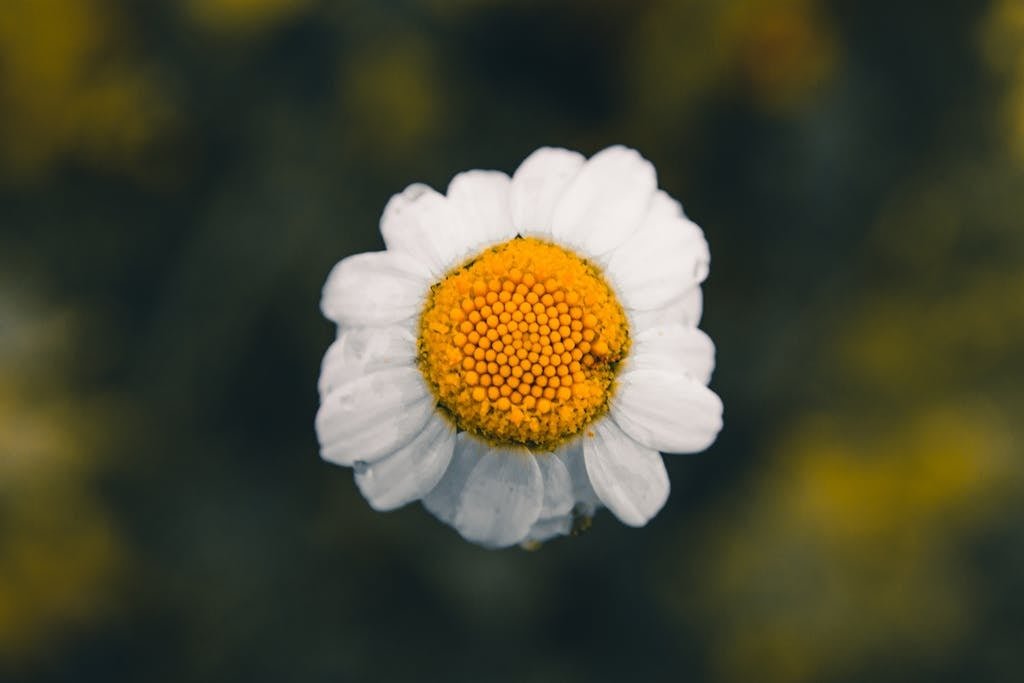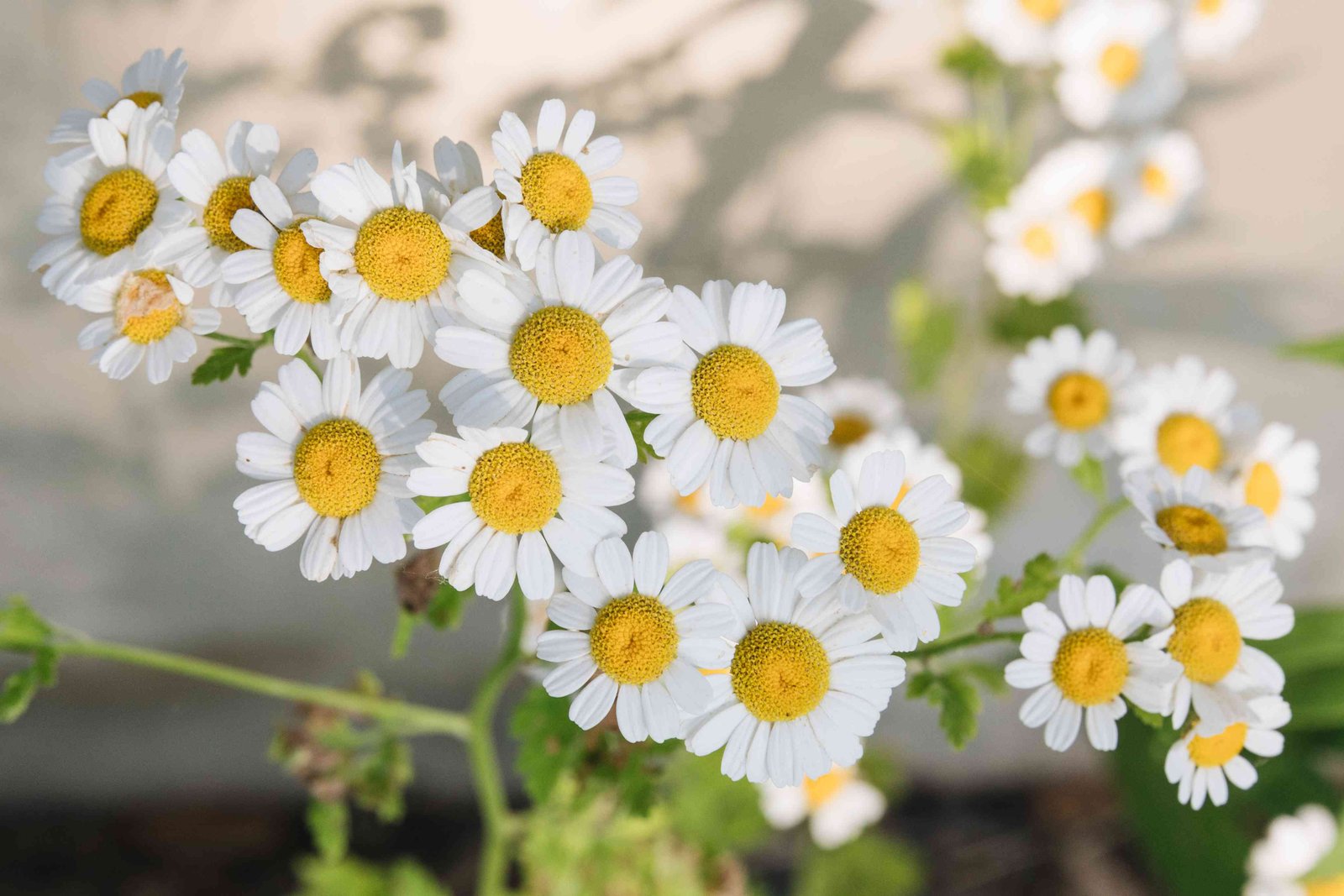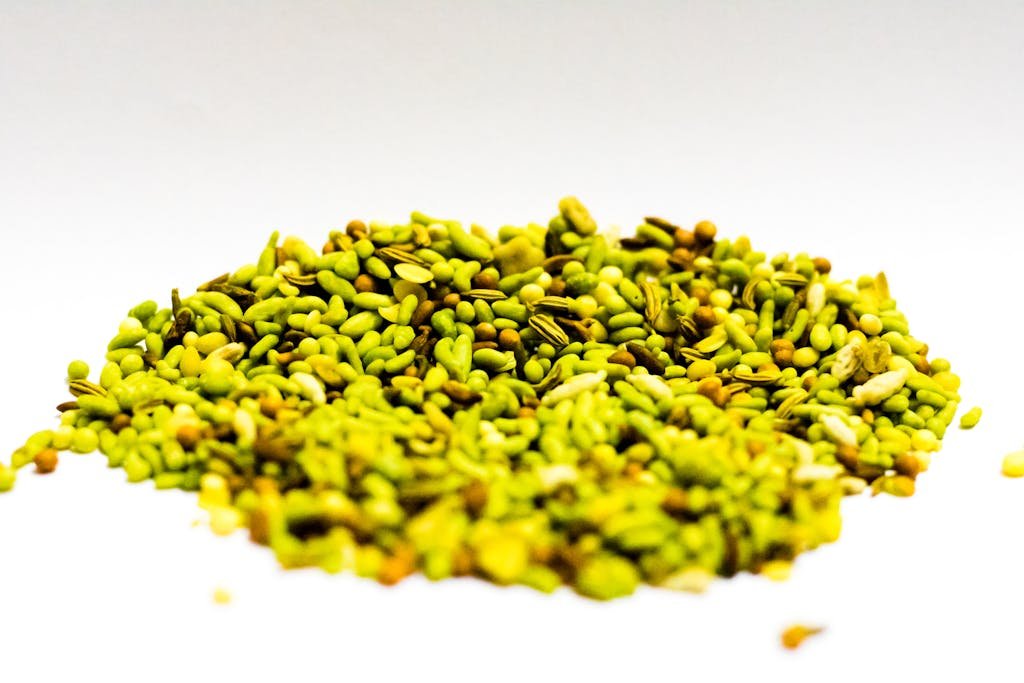Wormwood – (Artemisia absinthium)
Wormwood (Artemisia absinthium) isn’t just a plant; it’s a story woven through history, mystery, and the art of absinthe making. This bitter herb, native to Eurasia and Northern Africa, has carved its niche in both traditional medicine and the world of spirits. Its silver-green leaves and aromatic qualities make it unmistakable, but it’s the plant’s complex legacy that truly captivates the imagination.
Renowned for its role in the creation of absinthe, wormwood has stirred both fascination and controversy. Beyond its infamous association with the “Green Fairy,” wormwood’s uses span medicinal applications, culinary experiments, and even pest control. As we delve into the world of Artemisia absinthium, we uncover a plant that’s as multifaceted as it is potent.
Key Takeaways
- Wormwood (Artemisia absinthium) has a rich history intertwined with traditional medicine, culinary practices, and the production of absinthe, highlighting its versatility and enduring relevance.
- Beyond its notoriety for contributing to the psychoactive effects of absinthe, modern research has debunked many of these myths while exploring wormwood’s antimicrobial and antifungal properties, suggesting potential new applications in healthcare and agriculture.
- The art of absinthe making remains a celebrated tradition that emphasizes the delicate balance of bitterness from wormwood with other botanical flavors, underscoring the herb’s central role in crafting this iconic spirit’s unique taste profile.
- As a natural pest control agent, wormwood offers an eco-friendly alternative to synthetic pesticides, leveraging its essential oils and bitter compounds to deter pests and fungal growth, which is valuable for organic farming and gardening.
- Culinary experimentation with wormwood is expanding, with chefs and mixologists incorporating its distinctive bitterness into beverages, dishes, and even desserts, demonstrating the herb’s evolving role in modern gastronomy.
- Despite wormwood’s potential benefits, careful consideration and moderation are advised due to the potency of its compounds, particularly thujone, to ensure safety in its various applications.
History of Wormwood
Wormwood, with its botanical name Artemisia absinthium, carries a history as intoxicating as its uses. This herb, native to Eurasia and Northern Africa, has woven its way through ancient civilizations, embedding itself into their medical, culinary, and cultural tapestries. Historically, wormwood has been revered for its bitter taste and supposed medicinal properties, which were documented as far back as the Ebers Papyrus in 1550 BC. This ancient Egyptian medical text references wormwood’s use in eliminating intestinal worms, highlighting the plant’s longstanding significance in traditional medicine.
The name “wormwood” itself echoes this herb’s historical application in treating worm infestations. Its genus name, Artemisia, pays homage to Artemis, the ancient Greek goddess of the hunt and childbirth, suggesting its historical use in gynecological conditions. Throughout the Middle Ages in Europe, wormwood gained prominence for its role in warding off plague and as a staple ingredient in the legendary potion known as “Thieves’ Vinegar”, used by grave robbers to prevent the plague.
The Renaissance period marked a pivotal moment for wormwood, as it started being distilled with alcohol to create vermouth, a word derived from the German wermut for wormwood. By the 18th century, it found its most notorious application in the production of absinthe, a high-proof spirit that became infamous for its psychoactive and addictive properties—though modern science disputes many of those claims.
Interestingly, wormwood’s story is not just one of medicine and spirits. The plant also features in the Bible, symbolizing bitterness and sorrow, and has inspired artists and writers across ages, from Vincent Van Gogh to Ernest Hemingway, who attributed part of their creativity to absinthe’s influence.
Despite its controversial past, research continues to explore wormwood’s potential. Studies have investigated its antimicrobial and antifungal properties, with promising results indicating a renaissance of interest in the plant’s practical applications beyond its historical uses.
Wormwood’s journey from an ancient remedy to a modern botanical marvel exemplifies the plant’s resilience and its complex relationship with humanity. Whether as a bitter herb in ancient medicines or the key ingredient in absinthe, wormwood continues to fascinate and inspire research and innovation in various fields.
The Art of Absinthe Making
Absinthe, often dubbed “the Green Fairy,” is a distilled, highly potent spirit known for its vibrant green color and complex flavor profile. At the heart of absinthe’s distinctive character is wormwood (Artemisia absinthium), a key botanical that has shaped the drink’s notorious reputation and intriguing history. The process of making absinthe involves macerating wormwood along with other herbs like green anise and fennel in alcohol, followed by distillation. This method extracts essential oils, contributing to absinthe’s signature bitterness and mesmerizing louche effect when water is added.
The genesis of absinthe can be traced back to Switzerland in the late 18th century, with its popularity peaking in France during the Belle Époque. Artists and writers of the time, seduced by absinthe’s inspiring and, at times, hallucinogenic properties, frequently celebrated the spirit in their works. However, it was wormwood’s thujone content—a compound thought to stimulate the brain—that caught the world’s attention. Despite modern research debunking many of the myths surrounding thujone, the allure of absinthe’s bohemian mystique continues.
Recent studies have explored wormwood’s potential beyond absinthe production. Its antimicrobial and antifungal properties make it an area of interest for scientific investigation. Yet, in the realm of absinthe making, it’s the balance of wormwood’s bitterness with the sweet and aromatic profiles of other botanicals that crafts a unique beverage.
Craft absinthe distillers today take great pride in sourcing high-quality wormwood, adhering to traditional methods while also embracing innovation. Through careful distillation, they strive to capture the essence of wormwood, ensuring each batch of absinthe delights the senses and honors the spirit’s storied past. As the fascination with absinthe endures, the role of wormwood in its production remains central, marking the spirit as a timeless tribute to the herb’s enduring appeal.
Physical Characteristics of Wormwood
Wormwood, scientifically known as Artemisia absinthium, is a perennial plant belonging to the daisy family. It thrives in various environments but prefers well-drained, rocky soil found in regions across Eurasia and Northern Africa. Wormwood’s distinctive features make it both a fascinating plant for herbalists and a cornerstone ingredient in the production of absinthe.
Growth Habit and Appearance
Wormwood exhibits a robust growth habit, capable of reaching up to 1.5 meters in height. The plant showcases a hardy, woody stem that supports its many silvery-grey leaves. The leaves are finely divided and possess a silky texture due to the tiny, hair-like structures covering their surface. During the summer months, wormwood produces small, yellowish flowers that cluster into spherical heads and add to the plant’s visual appeal.
Unique Adaptations
One of wormwood’s remarkable adaptations is its ability to thrive in poor soil conditions, a trait shared by many in the Artemisia genus. This resilience is partly due to its deep root system, which allows the plant to access nutrients and moisture from deep within the soil. Additionally, the plant’s aromatic compounds, most notably absinthin and anabsinthin, contribute to its bitterness and play a role in deterring herbivores.
Research Insights
Recent studies have shed light on wormwood’s chemical composition and potential health benefits. Research indicates that wormwood contains various essential oils and compounds with antimicrobial and antifungal properties. These findings have sparked interest in the plant’s medicinal applications, particularly its use in natural remedies and potential in combating certain diseases.
| Compound | Potential Benefit |
|---|---|
| Absinthin | Antimicrobial, may stimulate digestion |
| Anabsinthin | Bitter agent, potential digestive aid |
| Thujone | Historically linked to psychoactive effects |
The ongoing exploration of wormwood’s properties underscores the herb’s importance beyond its historical association with absinthe. Craft distillers and herbalists alike value the plant for both its flavor profile and potential health benefits, making it a subject of continued interest and study.
Medicinal Uses of Wormwood
Wormwood, known scientifically as Artemisia absinthium, has been venerated for its diverse medicinal properties for centuries. This herb’s potent compounds, particularly the essential oils and thujone, play a pivotal role in its therapeutic applications.
Historical Significance and Contemporary Research
Historically, wormwood was a staple in herbal medicine, used to treat ailments ranging from digestive disorders to worm infestations. In contemporary times, research supports some of these traditional uses while prompting a deeper exploration into the plant’s pharmacological potential.
- Digestive Health: Studies indicate that wormwood can stimulate digestion, enhancing bile secretion and reducing inflammation in the digestive tract. This supports its traditional use in treating indigestion, bloating, and gastritis.
- Parasitic Infections: The presence of thujone in wormwood is linked to its anthelmintic properties, making it effective against intestinal worms.
- Antimicrobial Effects: Recent research highlights wormwood’s broad-spectrum antimicrobial capabilities. Its essential oils have shown effectiveness against various bacteria and fungi.
Potential in Modern Medicine
The exploration of wormwood in modern medicine is gaining traction, particularly its application in managing chronic diseases and conditions.
- Autoimmune Disorders: Prominent among wormwood’s potential applications is its role in managing autoimmune disorders, such as Crohn’s Disease. A study indicated significant improvement in patient outcomes when wormwood was included in treatment plans.
- Antioxidant Properties: Wormwood contains compounds that exhibit strong antioxidant activities. These activities play a crucial role in neutralizing harmful free radicals, thereby reducing oxidative stress and potentially lowering the risk of chronic diseases.
While the medicinal uses of wormwood are backed by both historical evidence and emerging research, it’s important for consumers to approach its use with caution, especially given the potential toxicity of thujone when consumed in high doses. Ongoing research continues to clarify and expand our understanding of wormwood’s therapeutic potential, making it a focal point in the study of natural remedies and herbal medicine.
Culinary Experiments with Wormwood
Wormwood, a herb with a long history of medicinal use, has also found its way into kitchens around the globe. Renowned for its bitter flavor, it has traditionally been a key ingredient in the production of absinthe, a potent distilled spirit famous in the 19th and early 20th centuries. Beyond absinthe, chefs and culinary enthusiasts are exploring the use of wormwood in various dishes, leveraging its unique taste to enhance flavors and add a touch of the unconventional.
Transforming Beverages
Wormwood’s distinct bitterness makes it an excellent addition to cocktails and non-alcoholic beverages. Mixologists are crafting innovative drinks by infusing wormwood into bitters and syrups, providing a complex flavor profile that elevates simple cocktails. The expansion into non-alcoholic options, such as herbal teas and flavored waters, underscores wormwood’s versatility in beverage creation.
Innovative Cooking Uses
Beyond its liquid applications, wormwood has sparked interest in the culinary field. Its intense bitterness can be a boon when used judiciously in cooking, offering a counterpoint to sweetness or richness in dishes. Gourmet chefs are incorporating wormwood into sauces, marinades, and even desserts, finding that when balanced correctly, its intensity can harmonize beautifully with other flavors, offering a palate experience unlike any other.
Culinary Precautions
While the exploration of wormwood in culinary applications is exciting, it’s essential to approach its use with knowledge and caution. The potent compounds, especially thujone, require careful measurement to avoid overpowering a dish or potentially causing adverse effects. Culinary professionals advise starting with small quantities and gradually adjusting to taste, ensuring that the herb enhances rather than dominates the flavor profile of a dish.
As the culinary world continues to experiment with wormwood, its reputation grows from a traditional medicinal herb to a modern culinary ingredient with the power to transform dishes and beverages. The integration of wormwood into the culinary arts represents a fusion of historical tradition and contemporary innovation, enriching the gastronomic landscape with its unique character and versatility.
Wormwood as a Pest Control Agent
In recent years, wormwood (Artemisia absinthium) has attracted attention not only for its uses in traditional and modern medicine but also as an effective natural pest control agent. Researchers and gardeners alike are turning to wormwood for its ability to deter various pests without the harmful environmental impact associated with synthetic pesticides.
One of the primary reasons wormwood is effective in pest management is due to its high content of essential oils and bitter compounds. These substances are particularly potent against a broad range of agricultural pests, including aphids, cabbage loopers, and flea beetles.
Studies have shown that extracts from wormwood can be used to create biopesticides that are not only environmentally friendly but also highly effective. For example, a research study highlighted in the Journal of Economic Entomology demonstrated the efficacy of wormwood extracts in controlling the diamondback moth, a notorious pest responsible for significant losses in cabbage and other cruciferous crops.
Furthermore, wormwood doesn’t just repel pests. It also has properties that can suppress fungal growth, making it a dual-action solution for garden and crop protection. This is particularly important for organic farmers and home gardeners who are looking for sustainable ways to protect their plants.
- Sprays: Homemade or commercially prepared wormwood sprays can be applied directly to plants to repel insects.
- Companion Planting: Using wormwood as a companion plant in gardens can naturally deter pests away from more vulnerable crops.
- Soil Amendment: Incorporating wormwood into compost or directly into the soil can help improve resistance against soil-borne pests and diseases.
It’s recommended that when using wormwood, whether in extract form or as a plant, gardeners should do so with consideration for the surrounding ecosystem. Despite its natural origins, wormwood can be potent, and its application should be managed to avoid adverse effects on beneficial insects and surrounding plant life.
Conclusion
Wormwood’s journey from traditional herbal medicine to a novel culinary ingredient and a natural pest control solution highlights its multifaceted benefits and versatility. Its role in treating digestive disorders and parasitic infections, combined with its potential in managing autoimmune diseases and serving as an antioxidant, showcases its significant medicinal value. The culinary world’s embrace of wormwood, experimenting with its unique flavor in various dishes and drinks, underscores its growing popularity and the importance of careful application due to its potent properties. Moreover, its effectiveness as a biopesticide offers an eco-friendly alternative for managing pests and diseases in agriculture and home gardens. Wormwood’s resurgence in both health and culinary sectors, along with its environmental benefits, marks a promising future for this ancient herb, blending tradition with modern innovation for holistic wellness and sustainable living.



